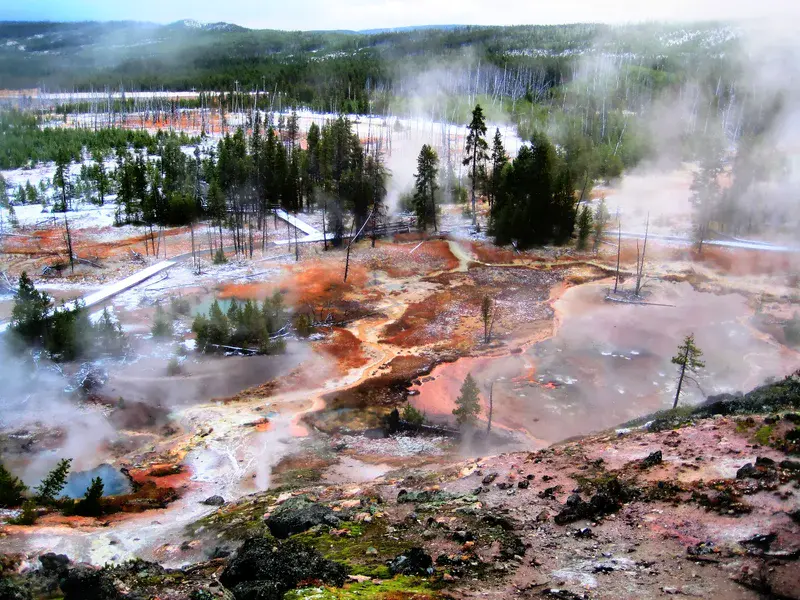
Artists' Paintpots in Yellowstone National Park
This picture corresponds to The Artist Paint Pots, which you can find in Yellowstone, the first National Park of the world. Yellowstone is one of the most geologically dynamic areas on Earth, because its huge underlying magma body releases enormous heat amounts, which feed more than 10000 hydrothermal features (geysers, hot springs, mudpots, fumaroles), approximately one-half of the world.
The Artist Paint Pots is an small geothermal area, which was named after the pastel multicoloured mud pots. Much of the water in these mud pots is near boiling (85 ºC), that's why life is so difficult in them. Only some cyanobacteria and algae can live under these extreme conditions, and they are major responsible for these beautiful paint pot colours.
The mud pots are acidic thermal features with a limited water supply. They need for their formation sulphite-reducing bacteria, which use hydrogen sulphide for energy, giving sulphuric acid as a waste product. The acidic water slowly dissolves the surrounding rocks, forming fine particles of silica and clay. This viscous clay-water mixture creates a muddy area, with the hot mud boiling and bubbling out at the surface. The paint pots are coloured mud pots, which range from pink to bright red to purple, due to the iron oxides, potassium, and magnesium in the soil. The reason for these coloured paint pots is a lack of sulphur. When sulphur is present, it reacts with iron oxides forming pyrite, which is grey.
In this area you can observe some groups of standing-dead trees. Some of them burned in 1988, but some others were killed by the runoff from nearby thermal features, which flooded the area around the trees. Minerals in the water plugged the base of the trees and killed them, leaving their bases white. Those trees are known as bobby-socks trees.
Featured on GeoLog, the official blog of the European Geosciences Union
Categories
- Geochemistry, Mineralogy, Petrology & Volcanology (990)
- Geomorphology (1404)
- Hydrological Sciences (682)
Location
- North America (769)
- Northern America (605)
- United States of America (401)
- Exact location (-110.5000 W, 44.6000 N)
Colours
Image properties
2048 × 1536 px;
image/jpeg; 2.8 MB
Camera:
Canon Digital IXUS 70
Taken on 6
October
2008
Submitted on 3 January 2015
Licence
Creative Commons Attribution-NonCommercial-NoDerivs 3.0 Unported (CC BY-NC-ND 3.0)
Credit
Josep Miquel Ubalde Bauló (distributed via imaggeo.egu.eu)
Share
Appreciate
Report